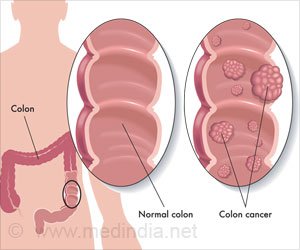Fighting Two Battles: COVID-19 and Cancer Care

However, in the post-state of emergency phase from June 16 to December 15, 2020, diagnoses began to increase.
The study also noted that patients with colorectal cancer and non-Hodgkin lymphoma diagnosed during the pandemic had poorer one-year survival rates than those diagnosed in 2018.
Advertisement
These findings are consistent with similar studies conducted in other countries, including the United Kingdom, the United States, the Netherlands, Germany, Japan, and other parts of Canada. The authors of the study emphasize the importance of screening services in reducing late-stage cancer diagnoses and recommend that cancer care systems become more efficient and increase capacity to mitigate the long-term effects of the pandemic on cancer outcomes.
Screening Saves Lives: The Urgent Need for Cancer Detection during COVID-19
Based on a new Alberta study published in CMAJ (Canadian Medical Association Journal), pandemic limits were associated with a significant decrease in breast, colorectal, prostate, and melanoma diagnoses (1✔ ✔Trusted Source
Impact of the COVID-19 pandemic on cancer diagnoses, stage and survival in Alberta
Go to source
).
“The sweeping and unprecedented measures enacted at the beginning of the COVID-19 pandemic in Alberta had an inevitable impact on cancer care,” writes Dr. Darren Brenner, an epidemiologist in Calgary, Alberta, and associate professor at the University of Calgary’s Cumming School of Medicine, with coauthors. “Even though treatment and urgent surgeries for cancers were prioritized when other procedures were delayed or canceled, preventive and diagnostic services were greatly reduced.”
The study compared survival rates for 3 groups of patients diagnosed between (1) Jan. 16, 2018, and Mar. 15, 2019; (2) Mar. 16, 2019, and Mar. 15, 2020; and (3) Mar. 16 and Dec. 15, 2020. The researchers divided the third period into a “state of emergency” (SOE) phase (Mar. 16 to June 15, 2020) and a post-SOE phase (June 16 to Dec. 15, 2020).
Researchers saw large reductions in the number of new diagnoses for some cancer types during the SOE period, with a drop of 43% (melanoma), 36% (colorectal and prostate), and 33% (breast). In the post-SOE phase, diagnoses increased by 9%, 8%, and 10% per month, respectively. Other cancers, such as bladder, kidney, lung, and cervical, did not show decreases in diagnoses during that period.
“Our findings that early-stage breast and colorectal cancer had the largest decrease in diagnoses suggest that a reduction in screening services during the first wave of pandemic-related restrictions in Alberta resulted in asymptomatic individuals receiving a diagnosis later than they would have otherwise,” write the authors. “These results highlight the importance of screening services in reducing late-stage cancer diagnoses.”
Patients with colorectal cancer and non-Hodgkin lymphoma diagnosed during the pandemic period in 2020 had poorer 1-year survival than those diagnosed in 2018.
By December 2020, the rate of diagnoses had returned to a level more in line with pre-SOE levels.
The findings are consistent with studies from the United Kingdom, the United States, the Netherlands, Germany, Japan, and other parts of Canada. In Ontario, there was a 34% drop in new cancer diagnoses in April 2020, and Manitoba had a 23% reduction in the same period. An estimated 15% reduction in Quebec occurred in the first year of the pandemic.
Cancer care must become more efficient and increase capacity to reduce the long-term effects of the pandemic on cancer outcomes, the authors conclude.
Reference :
- Impact of the COVID-19 pandemic on cancer diagnoses, stage and survival in Alberta – (https://www.cmaj.ca/content/195/23/E804)
Source: Eurekalert
Source link
#Fighting #Battles #COVID19 #Cancer #Care



